Virtual Marine: Simulator Training is the Real Deal
In the commercial maritime and offshore industries, where worker safety and competency are crucial, effective training practices are an absolute must. While hands-on, in-the-field learning will always be a vital component of any mariner’s training, marine simulation has become a welcome enhancement to the education process. And in some cases, it’s seen as a safer alternative to traditional survival craft and rescue boat training.
A leader in this space is Virtual Marine, based in Newfoundland and Labrador. Founded 20 years ago, the marine technology company has been a pioneer in revolutionizing training methodologies through immersive simulation technologies.
A legacy of innovation
Virtual Marine’s journey began two decades ago with a singular vision: to leverage digital technologies to enhance the effectiveness of maritime training and, ultimately, improve crew safety. The company built its first simulator for the Hibernia field offshore Newfoundland as a direct result of the Ocean Ranger sinking in 1982, which resulted in 84 lives lost. A Canadian Royal Commission report concluded that a main factor leading to the tragic incident was insufficient training at many levels, including lifeboat coxswain training.
The company has since been at the forefront of lifeboat coxswain training as well as fast rescue boats and ice management simulators.
“We enable workers to develop critical worksite-specific competencies by engaging them in challenging simulation training programs,” said Clayton Burry, vice president of sales at Virtual Marine. “We've been involved heavily in the research associated with simulation as well, so we've been able to prove simulation systems to be a much safer and more effective form of training.”
Burry said the company’s simulators are deployed globally, from ships and oil rigs offshore to land-based installations in training academies and elsewhere.
In addition to building the simulators, Virtual Marine owns and operate a series of training centers, including three in the Americas: Newfoundland, Broussard, La. and Robert, La.
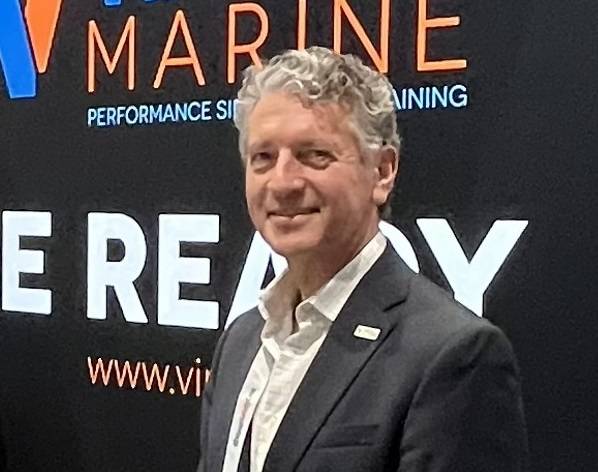 “We enable workers to develop critical worksite-specific competencies by engaging them in challenging simulation training programs.” – Clayton Burry, vice president of sales at Virtual Marine (Photo: Virtual Marine)
“We enable workers to develop critical worksite-specific competencies by engaging them in challenging simulation training programs.” – Clayton Burry, vice president of sales at Virtual Marine (Photo: Virtual Marine)
Harnessing the power of technology
Over the years, Virtual Marine has witnessed significant advancements in technology, particularly in virtual reality, graphics processing power and machine learning. Burry highlighted the pivotal role of machine learning in shaping the future of training. By analyzing data collected from over 160 lifeboat simulators, Virtual Marine enhances training effectiveness and provides valuable insights.
“That data is really important to our customers because they want to know, ‘How effective are our coxswains? Are they gapping anywhere where we need to focus? Where are they excelling? How can we dashboard that information?’” Burry said, “The knowledge that we've gained from our training scenarios is being used to improve our curriculum development. It's also feeding artificial intelligence and machine learning algorithms, which underpin predictive decisions.”
Among a number of research programs ongoing at Virtual Marine is the development of a new system leveraging AI and machine learning to provide decision support for offshore operations.
Burry illustrated this with an example: “Perhaps there's a storm that's been predicted to hit an offshore field,” he said. “Our system can analyze crew training records and recommend specific training exercises to prepare for potential emergencies, mitigating risks and ensuring readiness.”
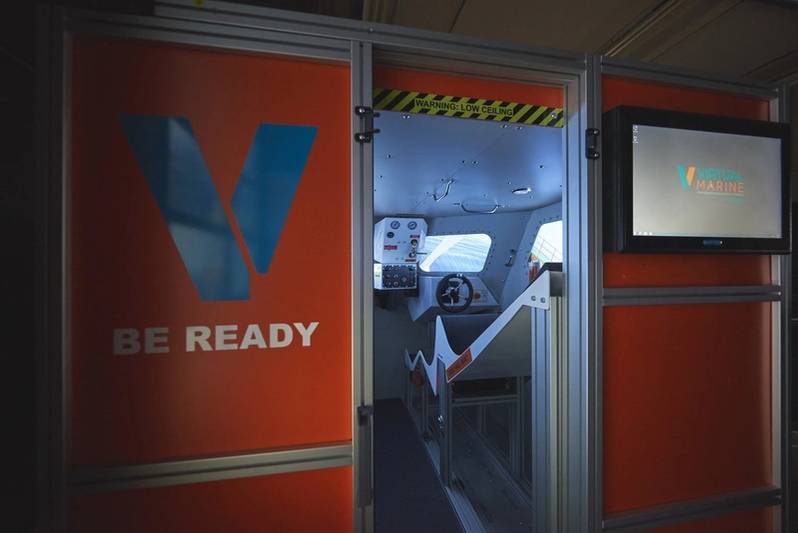 (Photo: Virtual Marine)
(Photo: Virtual Marine)
Expanding horizons
Virtual Marine’s commitment to innovation extends into other parts of the industry as well. In the passenger vessel sector, the company recently collaborated with BC Ferries to develop technology that is first-of-its-kind globally.
“BC Ferries had an objective to improve the safety and competency of their workers in what's normally a very stressful environment,” Burry said. “One of the big things that they were trying to guard against was the risk of injury to their personnel, resulting from live boat launches.”
Virtual Marine and BC Ferries came together to develop a custom solution. “At the heart of it, it’s really a rescue-boat simulator, together with a new custom-launch and recovery configurations to match all of the vessels in their fleet. . . And as part of this project, we developed what is, in fact, the world's first marine evacuation system simulator.”
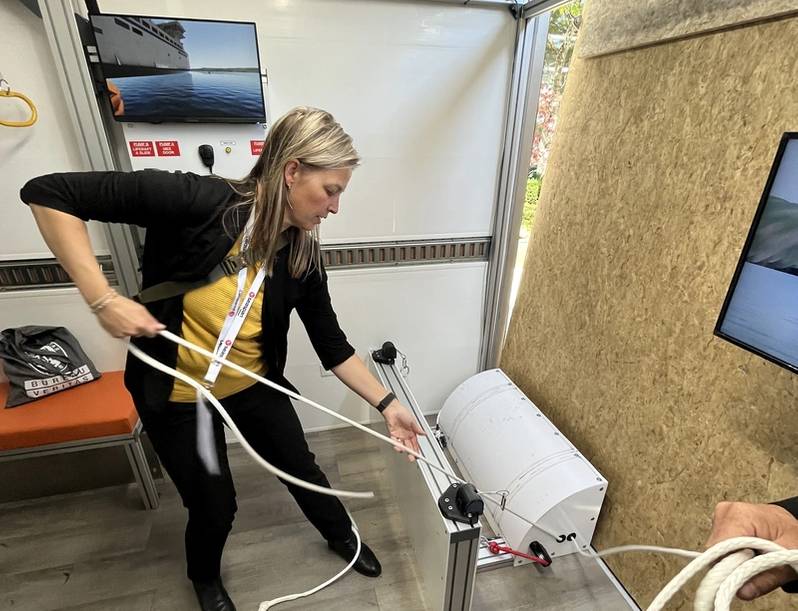 (Photo: Virtual Marine)
(Photo: Virtual Marine)
Without simulation, opportunities to train on marine evacuation systems are few and far between, basically only coming along when the system becomes outdated and needs to be replaced. “With our simulator, you can train for that every day. Even the manufacturers of those systems see the potential for this. So, I think that's going to be an important play for us,” Burry said, pointing to strong potential in the cruise and ferry industries.
The final delivery for BC Ferries includes a dozen 22-foot trailers full of simulators, which the ferry operator has been deploying to various sites where they can do mobile training. “They'll have a crew coming off a ferry at a certain terminal, for example, and before they go home or maybe on their way to work, they go into the trailer and perform a series of training scenarios,” Burry said.
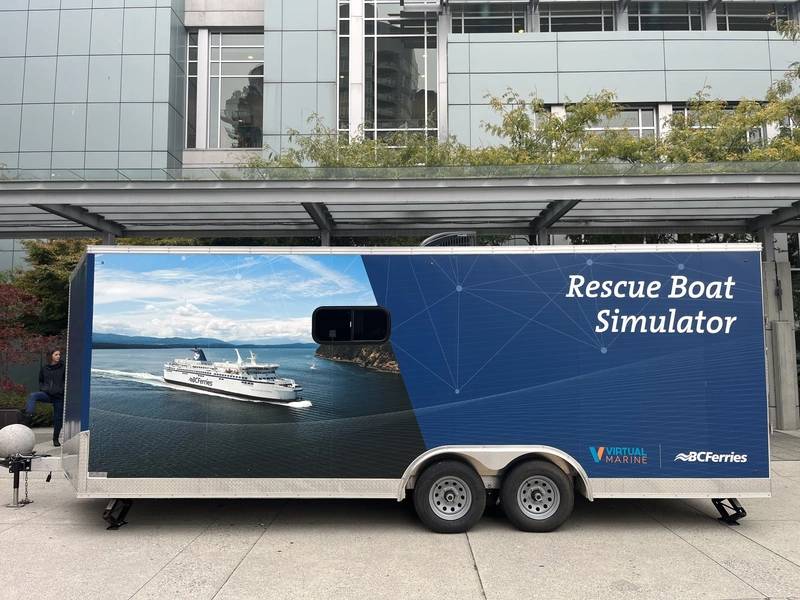 One of 12 BC Ferries trailers with Virtual Marine simulators (Photo: Virtual Marine)
One of 12 BC Ferries trailers with Virtual Marine simulators (Photo: Virtual Marine)
Pioneering regulatory change
Virtual Marine’s impact extends beyond technology development. The company has played a pivotal role in driving regulatory change, particularly in advocating for the use of simulators in maritime training.
“As the pioneer and initial developer of the lifeboat simulator, and currently the market leader in that area, we have effected a lot of regulatory change,” Burry said. “We were the ones who started the process of getting simulation for lifeboat training at the DNV level, and we were the first ones there with a DNV certificate at the International Maritime Organization (IMO).”
Burry emphasized the significance of recent changes at the IMO, which now allow for simulator-based training in lieu of live lifeboat launches, offering more flexibility and enhancing safety.
• On February 9, 2023, the IMO sub-committee on Human Element, Training and Watchkeeping (HTW) ratified revisions to the model course 1.23 on Proficiency in survival craft and rescue boats other than fast rescue boats - PSCRB 1.23 (Lifeboat) and PSCRB 1.24 (Fast Rescue Boat). • Those changes resulted in a significant change to how lifeboat and FRB training can take place. • Now, those following the PSCRB Model Courses have the choice of using approved simulators to replace elements of lifeboat and FRB training that had previously specified the use of real boats. • Elements of the practical drills and exercises related to the launch, recovery, operation and maneuvering of lifeboats and rescue boats may be conducted using simulation, provided that some additional facilities and equipment are available. • IMO published the official new Model Courses in January 2024. |
On the lifeboat side, both initial and refresher training can be conducted using simulators only. On the rescue boat side, simulators can be used for refresher training only. The next step is for flag state regulators to approve the model courses.
“These changes now mean that marine training schools have a choice of either using real-life boats and rescue boats or using simulators,” Burry said. “This is a big change, and we've seen a market shift already, even ahead of the approvals by the U.S. Coast Guard and others elsewhere around the world. Everybody's looking at this now and saying, ‘Hey, we know it's coming.’”
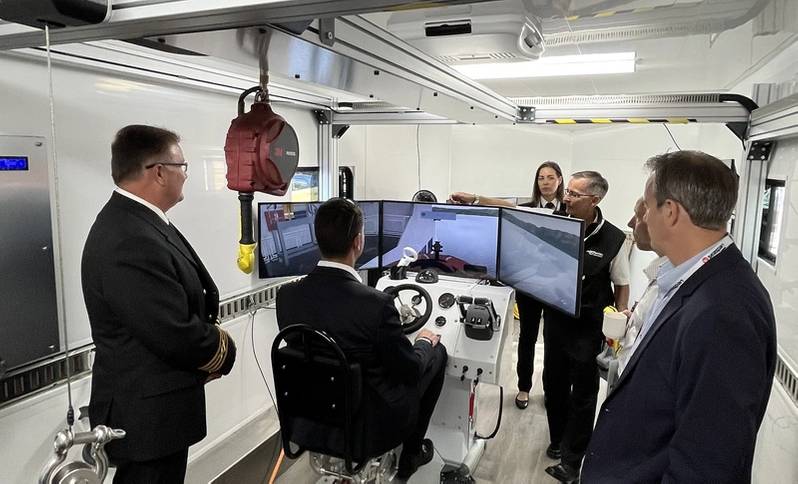 (Photo: Virtual Marine)
(Photo: Virtual Marine)












